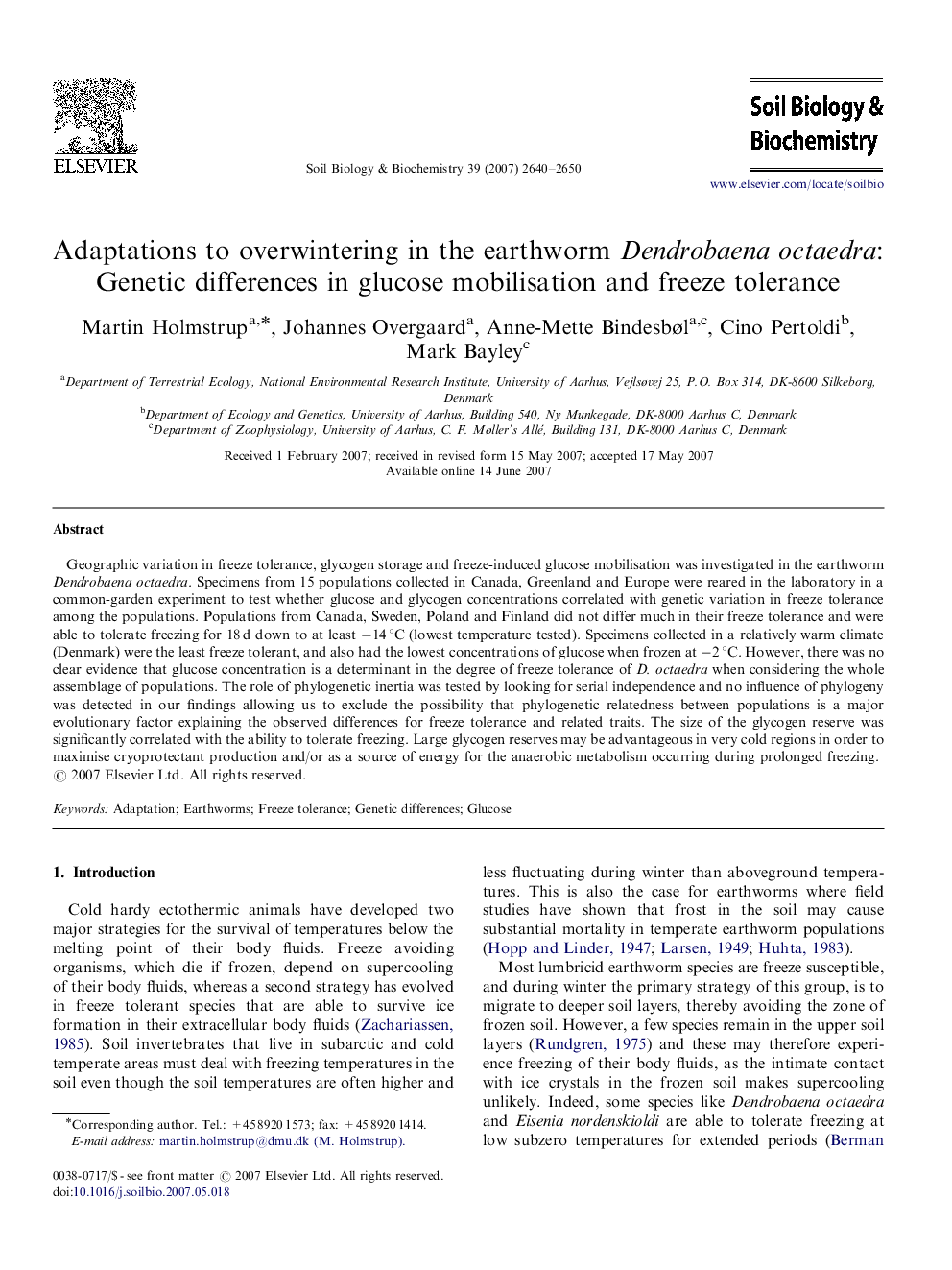| Article ID | Journal | Published Year | Pages | File Type |
|---|---|---|---|---|
| 2025928 | Soil Biology and Biochemistry | 2007 | 11 Pages |
Geographic variation in freeze tolerance, glycogen storage and freeze-induced glucose mobilisation was investigated in the earthworm Dendrobaena octaedra. Specimens from 15 populations collected in Canada, Greenland and Europe were reared in the laboratory in a common-garden experiment to test whether glucose and glycogen concentrations correlated with genetic variation in freeze tolerance among the populations. Populations from Canada, Sweden, Poland and Finland did not differ much in their freeze tolerance and were able to tolerate freezing for 18 d down to at least −14 °C (lowest temperature tested). Specimens collected in a relatively warm climate (Denmark) were the least freeze tolerant, and also had the lowest concentrations of glucose when frozen at −2 °C. However, there was no clear evidence that glucose concentration is a determinant in the degree of freeze tolerance of D. octaedra when considering the whole assemblage of populations. The role of phylogenetic inertia was tested by looking for serial independence and no influence of phylogeny was detected in our findings allowing us to exclude the possibility that phylogenetic relatedness between populations is a major evolutionary factor explaining the observed differences for freeze tolerance and related traits. The size of the glycogen reserve was significantly correlated with the ability to tolerate freezing. Large glycogen reserves may be advantageous in very cold regions in order to maximise cryoprotectant production and/or as a source of energy for the anaerobic metabolism occurring during prolonged freezing.
